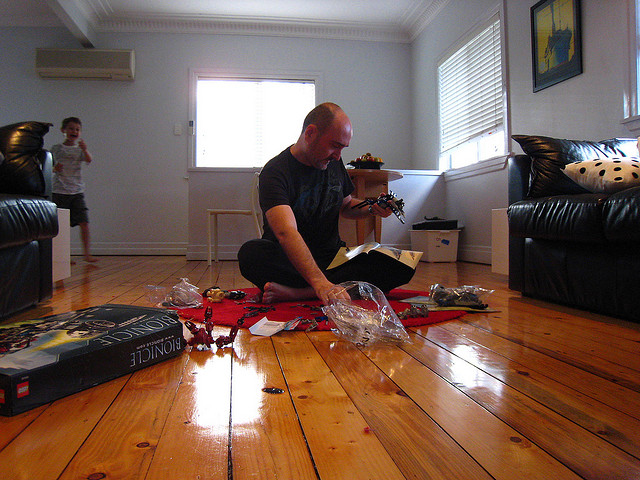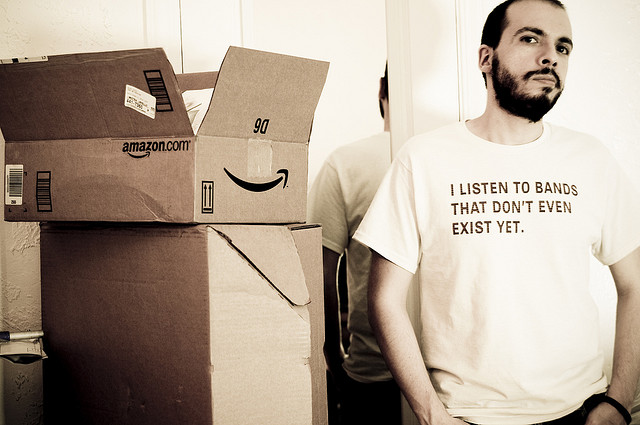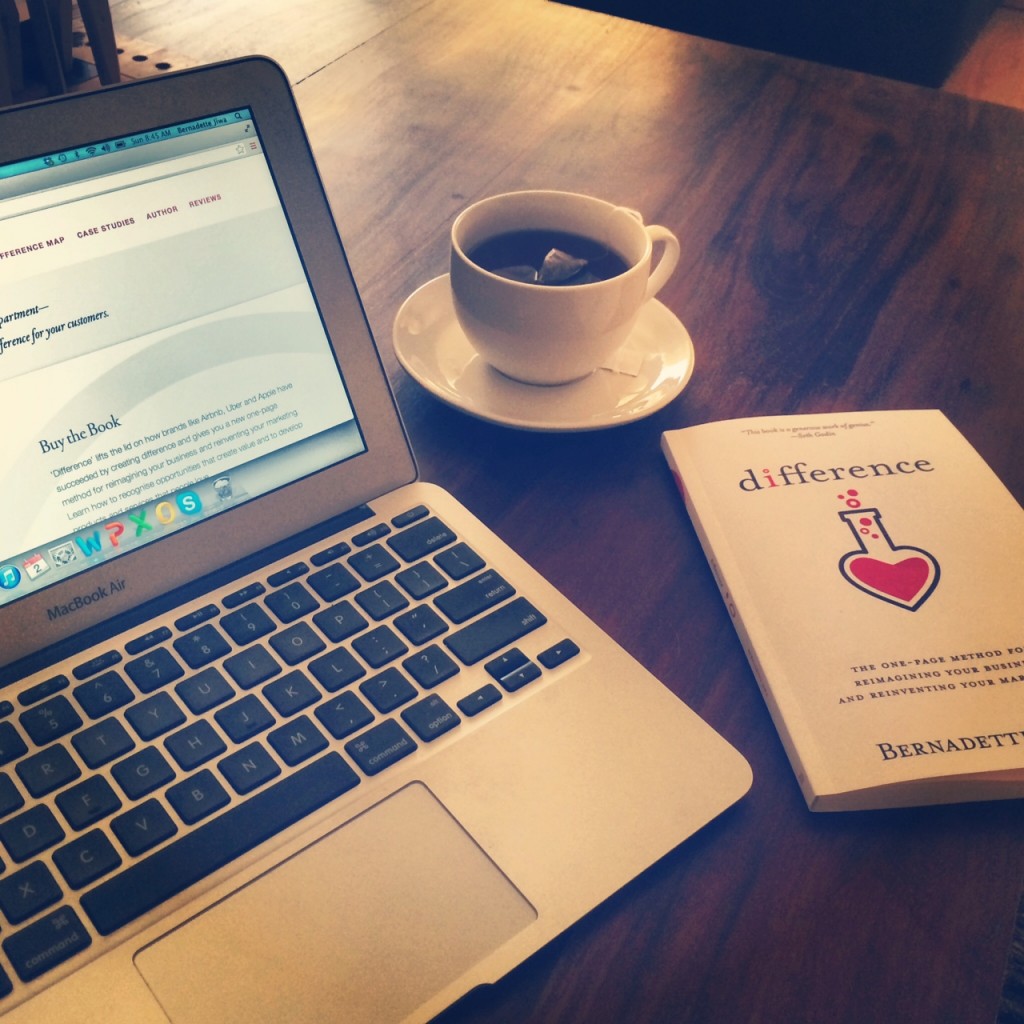Unlock the Magic in Your Story Now
Get the Free 20 questions to Ask Before Launching Your Idea workbook when you sign up for occasional updates.
Get the Free 20 questions to Ask Before Launching Your Idea workbook when you sign up for occasional updates.
Articles filed in: Strategy
What Don’t You Do?
filed in Marketing, Storytelling, Strategy
 You are challenged at least ten times every day to explain to people what you do and why you do it. This happens on your about page, at networking events and even as you sit next to someone ten thousand feet up on a transatlantic flight.
You are challenged at least ten times every day to explain to people what you do and why you do it. This happens on your about page, at networking events and even as you sit next to someone ten thousand feet up on a transatlantic flight.
A great place to start is by unapologetically telling people what you don’t do.
“We’re not cheap….”
“You won’t find that here….”
“Our best work takes time….”
One of the best examples I’ve seen of this comes from The Mill Gym here is Perth which only admits a hundred members.
“The Mill is a basic facility with all the tools we need. It is purposely designed this way for a number of reasons. One of those reasons is to sort out the pretenders from the realists. There is no time to look at yourself in the mirror, because we have no mirrors. There is no time to stop and watch TV, because we have no TVs. Nor will you find any other distractions here.”
Being really clear about what you don’t do enables you to tell potential customers what you excel at and why. But most important of all, it helps you to attract the right customers to your business and to softly close the door on people who are not a great fit for you.
Now you have more time and space to really connect with the people you want to serve.
The same rule applies whether you’re training a tiny group of hardcore athletes or building a
global yoga community.
So tell me, what don’t you do?
Image by Wally Gobetz.
10 Ways To Stand In Your Customer’s Shoes
 When LEGO was developing a castle play set they brought fans of all ages together to get feedback.
When LEGO was developing a castle play set they brought fans of all ages together to get feedback.
The adults loved it.
“But where’s the dragon?” the children asked.
The adults explained that there were no dragons in Medieval times.
“Where’s the fun in that?” the kids replied.
So, the dragon was born.
What we think our customers want isn’t always accurate and what they say they want isn’t always the whole truth. This is why you can’t rely on hunches or even on focus groups alone. You need to find ways to empathise with your customers and to truly understand the problem you are solving for them.
10 ways to stand in your customer’s shoes
1. Spend time where your customers are, both online and offline.
2. Watch what they do.
3. Listen to what they say.
4. Look for patterns in their day to day.
5. Think about their problems, the tiniest gap in their desires and how you might fill and fulfil those.
6. Consider how they actually feel in the situation where you want to create difference for them.
7. Work out how they want to feel and deliver on that.
8. Identify their wants, both physical and emotional.
9. Question how you can get them from where they are to where they want to be.
10.Think about the change that takes place in their lives because your product or service exists.
Now go tell them that story.
Image by Andrew Scott.
How To Get The World To Beat A Path To Your Door
 Traditional marketing in essence has been about doing something today in the hope that your business will reap the rewards in sales tomorrow. The marketer then has her eye firmly fixed on the future. Asking the question, ‘what do I need to do to get us from here to there?’
Traditional marketing in essence has been about doing something today in the hope that your business will reap the rewards in sales tomorrow. The marketer then has her eye firmly fixed on the future. Asking the question, ‘what do I need to do to get us from here to there?’
And yet the best marketing happens in the moment, when the entrepreneur, CEO, waiter, designer or developer takes the time to quietly practice empathy. It turns out that we are at our very best when we really see the world through the eyes of the person we’re trying to matter to.
That’s easy to write and much harder to do than it sounds.
The key to mattering to your customers is to actually care about them just as much, if not more than you do about the success of your business. One of the values of the renowned design firm IDEO is to make others successful, as they say—”going out of your way to help others succeed is the secret sauce.”
Perhaps the question we should be asking, one we don’t ask half often enough is:
“What can we do to get our customers from here to there?”
If you do that often enough the world will beat a path to your door.
Image by Lynda Giddens.
Thinking About Your Assets
filed in Entrepreneurship, Storytelling, Strategy
 Take a blank page. Draw a line down the centre. On one side list your tangible assets, things like stock, equipment, products and your website.
Take a blank page. Draw a line down the centre. On one side list your tangible assets, things like stock, equipment, products and your website.
On the other side make a list of your intangible assets, stuff like intellectual property, trademarks, brand names, the skills of your team, your customer database, reputation and the trust you have built over time.
Now one by one cross off the things that your competitors can easily replicate or acquire, on both sides of the list.
TANGIBLE ASSETS
Stock
Website
Equipment
Cash Balances
Product Lines
Property
INTANGIBLE ASSETS
Brand name
Logos
Trademarks
Patents
Formulas
Customer Database
Skills
Reputation
Customer Loyalty
Trust
What are you left with?
As we build our businesses, we often work hardest on the things that are replaceable, believing that our advantage is in the tangible value we provide and can demonstrate. The cup of coffee brewed, the line of perfect code written. But in a world where there are six cafés on every street and 200,000 programmers for hire on Elance in two clicks of a mouse we need to think more deeply about what really matters to our customers and clients. People place a premium on the things that you can never hand them over the counter (real or virtual). It turns out that trust is the scarcest resource we have.
If you want to build a truly great business put your energy into the things that can’t be crossed off the list.
Image by Death to Stock.
5 Things Your Brand Name Must Do
filed in Marketing, Storytelling, Strategy
 Brand naming is tough. There are so many variables to consider and the finality of saying ‘that’s it’, feels like a huge decision. Your name is probably the first encounter a potential customer will have with your business. A brand name has to stand the test of time and wear a lot of hats.
Brand naming is tough. There are so many variables to consider and the finality of saying ‘that’s it’, feels like a huge decision. Your name is probably the first encounter a potential customer will have with your business. A brand name has to stand the test of time and wear a lot of hats.
5 Things your brand name must do
1. Make the right people curious to know more about your story.
A great brand name is your opening move, your chance to hold people for a second longer and then to keep the conversation going. Does it speak to the people you hope will become your customers? People have been so curious about how the Warby Parker name came to be that the name itself has become a story. It’s been more than just a label for their products, the company name is an asset to the business.
2. Tell people something about who you are and what you stand for.
People will attach meaning in an instant. Is your company imaginative, ambitious, caring or forward thinking?
What does Apple say that Microsoft doesn’t? Your name needs to connect with people. How does yours signal your intention for your business?
3. Be easy to say, share, spell and pass along.
Err….how do you pronounce that again?
4. Be legal.
You don’t want to build your brand only to find you’ve stepped on the intellectual property toes of another company. Check trademark records, business name registers and if in doubt get the help of a lawyer who will do the checks for you.
5. Have domain name and social media username availability.
The .com debate rages on. Startups find great workarounds with .co, .cc, .io, .is domain extensions and by adding prefixes like the words ‘meet’ and ‘get’. Check social media username availability at NameChk.
This tool saves my life daily when I’m developing brand names for clients.
There is one thing your brand name shouldn’t do and that’s prevent you from starting. I’ve seen it time and time again. People get stuck trying to find the perfect name, so stuck that this holds their project up for months—sometimes forever. An idea that’s out there making an impact in the world is better than perfection.
Image by Deiby.
It’s Here—The Book That Will Reinvent Your Marketing

It’s incredible to think about the changes that have happened to our lives and businesses in the last decade. Now instead of guessing what our customers are thinking we can actually listen to what they want. We can see what they are doing all of the time, in real time. And yet, we’re still using a marketing model that was designed to sell things to our grandparents. It’s not working.
That’s why I wrote my new book Difference to give you a one-page method to reimagine your business and rethink your marketing.
You can buy it now on Amazon Kindle or in paperback.
I want you to be able to tap into what your customers really want from you—something you already have, but that you’re not yet communicating.
What’s inside?
Difference is 100 pages of insights and strategies to take you from where you are to where you want to be. This book has zero padding, it gives you what you need in a bite-size volume. My aim is to give you the tools to get to work as soon as possible.
I have deconstructed how some of the most successful, emerging businesses have gained both market and heart share, and created a tool that will allow you to do the same.
You can download the Difference Map for free and use it to plan world domination.
The book also gives my take on how these businesses have succeeded by creating difference. You’ll learn the distinction between simply being different and creating difference and the case studies of businesses that have done this will be useful reference tools. You can read more about the book and share the resources from it at the difference.is website.
This book needs you too
I thought Difference should practice what it preached. There is no big publishing engine behind this book, no PR department and zero marketing budget. No press release, no blog tour or guest posts—just you and me and my intention for how this book can help you.
When you’ve read the book I’d be grateful for honest two line reviews on Amazon.com. They help people to find the book and to know if it’s for them or not. They help the book too!
The job of every entrepreneur, innovator and marketer going forward is not to ask customers to notice us. Our job is to really see them.
I tried hard to see you as I wrote this book. I hoped I’ve managed to do that.
*UPDATE: Thanks for helping to make Difference a #1 Amazon Bestseller in three categories, alongside legendary books like The Lean Startup within just 12 hours of this post going live.
Was Everything Okay?
 The table was clean. The waitress arrived to take coffee orders within a couple of minutes. We tried to ignore the peeling corners of the laminated menu.
The table was clean. The waitress arrived to take coffee orders within a couple of minutes. We tried to ignore the peeling corners of the laminated menu.
The food and the coffee were fine. The waitress polite in a ‘going through the motions’ kind of way. Her parting question as we paid the bill…..
“Was everything okay?”
Yes actually, everything was okay. We had no complaints, nothing to report and that, I guess is the problem for most businesses and it’s also the opportunity for you. Every day we have experiences that are nothing to write home about, micro make-or-break moments. Feelings that exist, but that we can’t explain. Changing how we feel in those moments is so important that Apple has a secret packaging room where designers test which box designs evoke an emotional response.
My friend Stuart who is an entrepreneur and gifted app developer once told me that what differentiates a great app from a good one is the feeling that a level of love has been put into it. Living in a digital age has conditioned us to expect. The goal posts for exceptional have shifted and it’s almost impossible to make a product or service fly now without that level of love.
We simply know it when we feel it. We don’t want everything to be okay anymore.
We want to feel the love.
Which brands change how you feel in the moment and why?
Image by Mark.
It’s Harder To Matter On Purpose
 It’s easy to think about what it would be like to build your business around the quick win. To be the author of the book discovered by a random stranger at the airport, or the designer who gets picked by the awards committee.
It’s easy to think about what it would be like to build your business around the quick win. To be the author of the book discovered by a random stranger at the airport, or the designer who gets picked by the awards committee.
It’s much harder to matter on purpose, to be intentional about the people you want to serve and to work out how you’re going to create difference for them.
That’s the reason more businesses don’t take the time to do it, and it’s also the reason for the success of the ones that do. There’s nothing to stop you being one of them.
Image by Sebastiaan ter Burg.
 When I was a little girl buying new shoes was always an event. We went to a local shoe shop, the one that advertised the credentials of their ‘specially trained fitters’ in the window. We patiently waited our turn for the magic that was about to happen. This usually involved a matronly woman and what was essentially a metal ruler in the crude shape of a shoe. The green plastic strap that she threaded around your instep to measure the width of your foot was important of course. This was science and not art, after all.
When I was a little girl buying new shoes was always an event. We went to a local shoe shop, the one that advertised the credentials of their ‘specially trained fitters’ in the window. We patiently waited our turn for the magic that was about to happen. This usually involved a matronly woman and what was essentially a metal ruler in the crude shape of a shoe. The green plastic strap that she threaded around your instep to measure the width of your foot was important of course. This was science and not art, after all.  ….is your obsession with them.
….is your obsession with them.